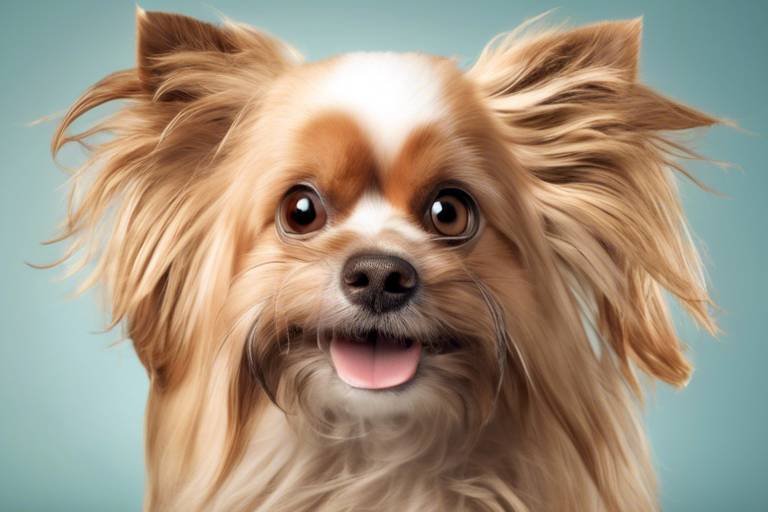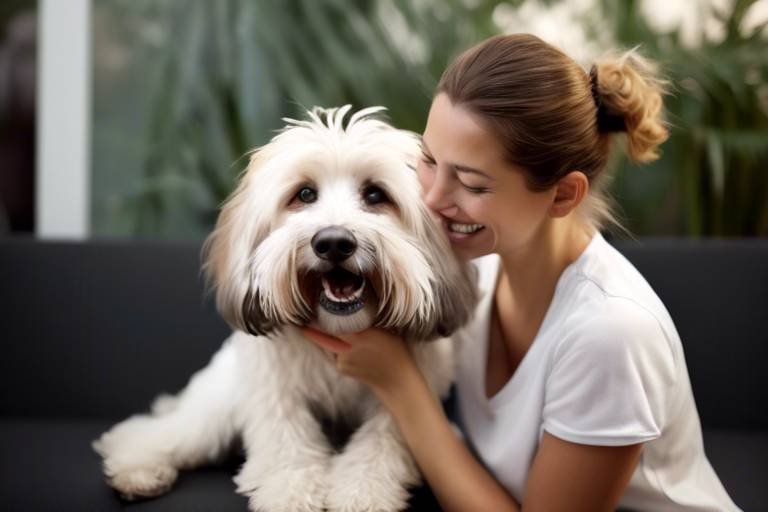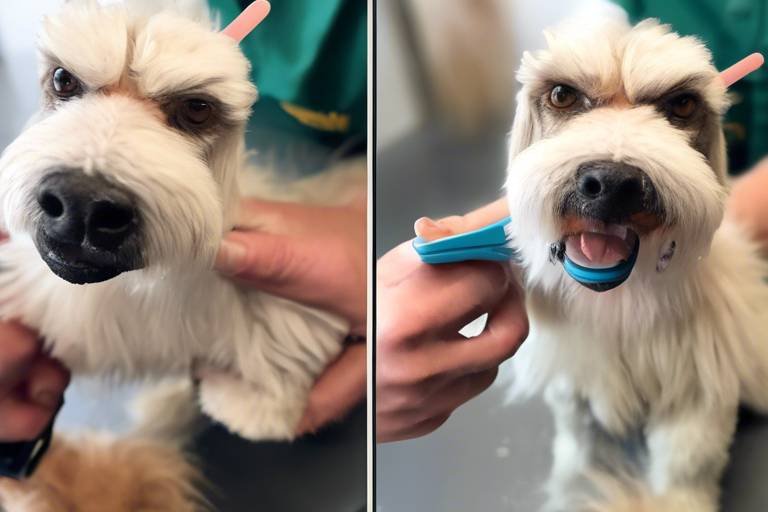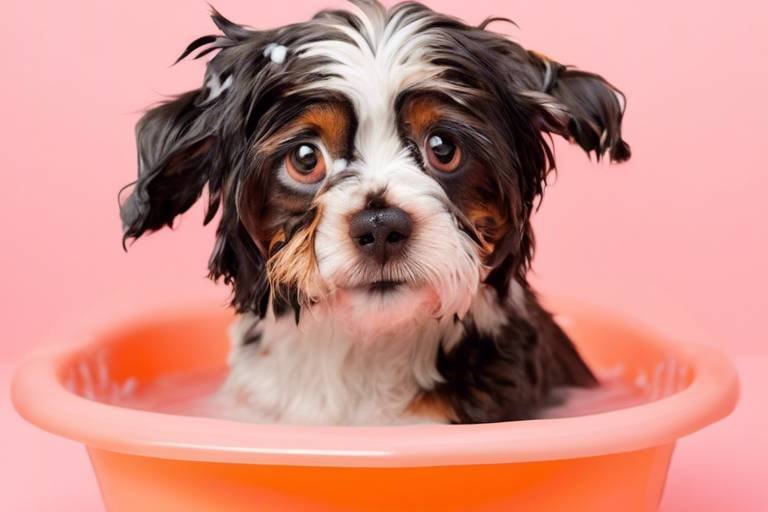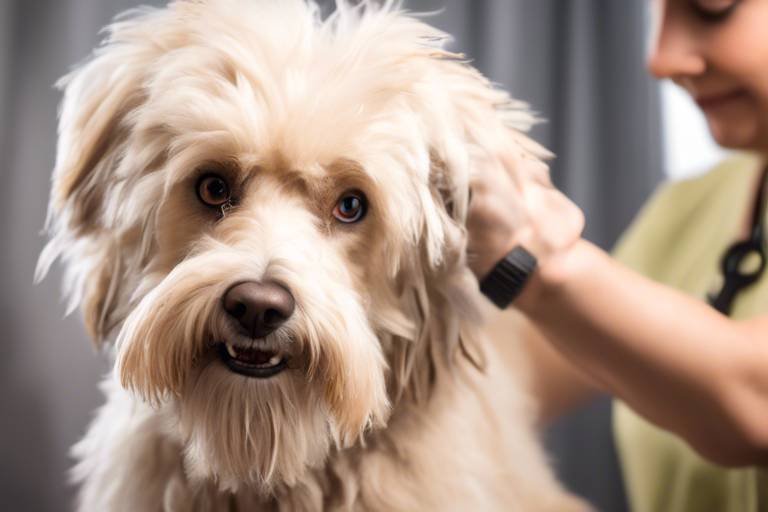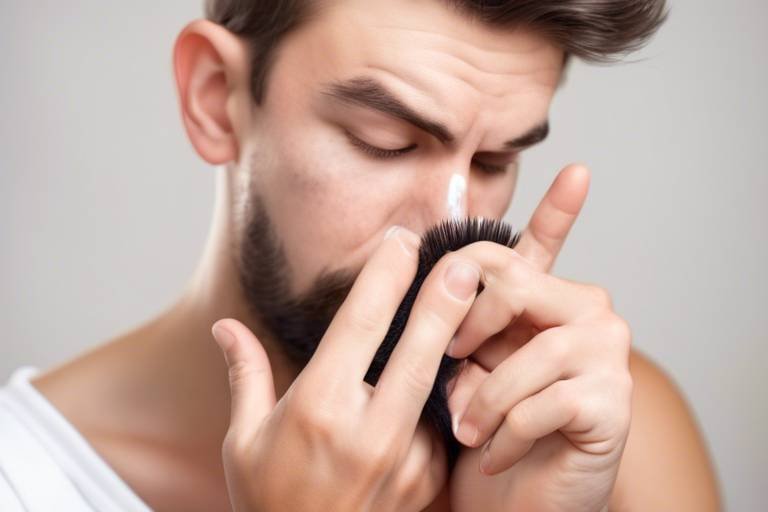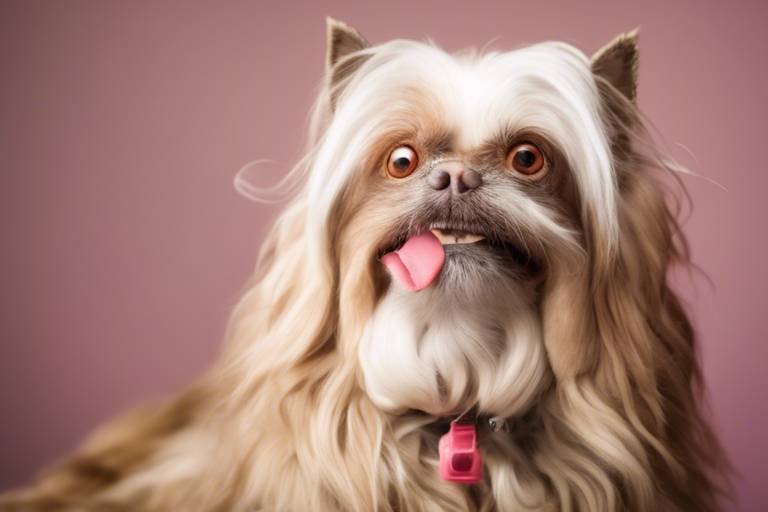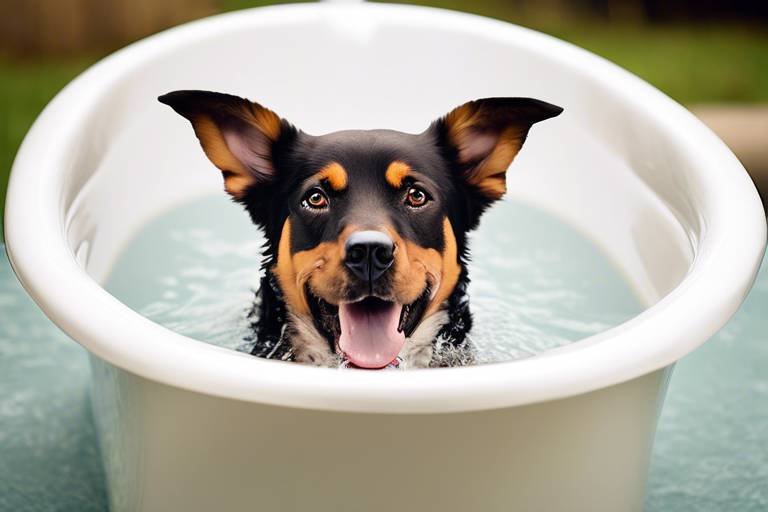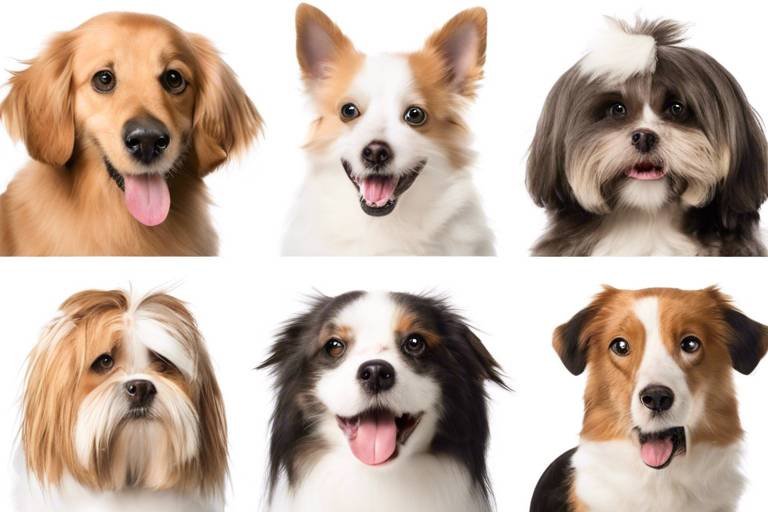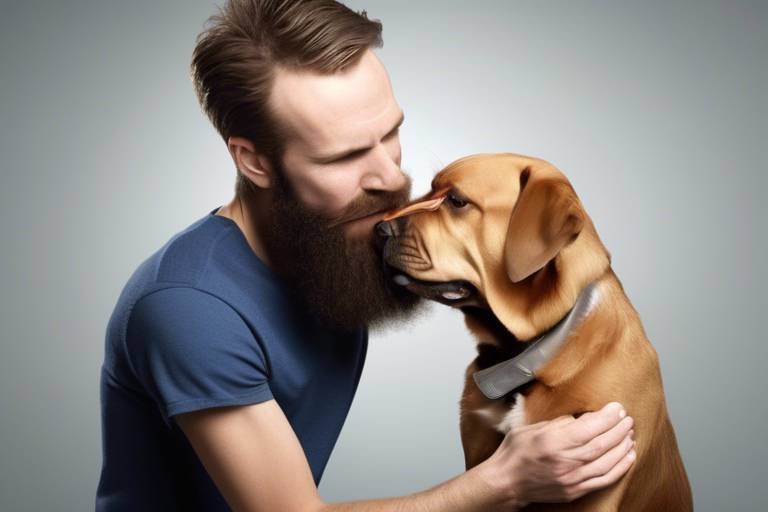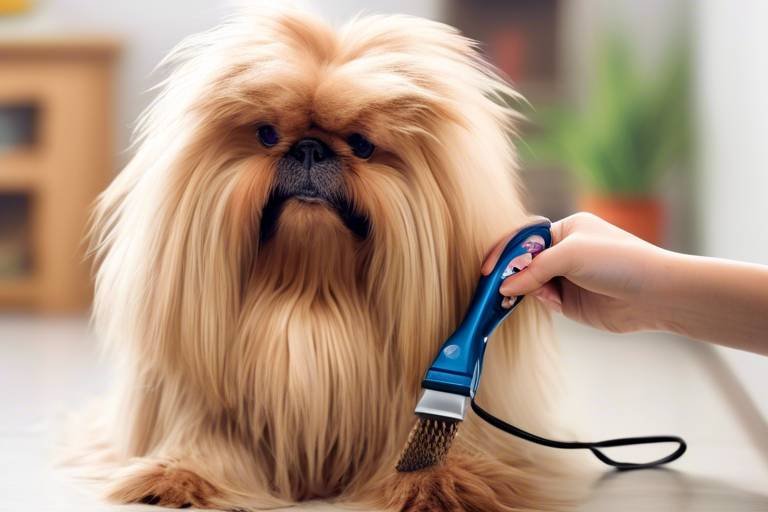Tips for Grooming Pets with Unique Grooming Requirements
Grooming your pet is more than just a routine task; it’s an essential part of their overall health and happiness. Many pet owners might think that all pets require the same grooming techniques, but the truth is far more complex. Different breeds come with unique grooming requirements that can significantly affect their well-being. Whether you have a fluffy Poodle, a sleek Siamese cat, or a wiry terrier, understanding their specific grooming needs is crucial. This article will guide you through the essential tips for grooming pets with unique grooming requirements, ensuring that your furry friends not only look great but feel great too.
Every pet is a unique individual, and their grooming needs can vary widely based on factors such as breed, coat type, and even health conditions. For instance, long-haired breeds like the Maine Coon require regular brushing to prevent matting, while short-haired breeds like the Beagle may need less frequent grooming. Additionally, certain breeds are prone to skin issues, making it vital to choose the right grooming products that cater to their specific sensitivities. By understanding these unique grooming needs, you can ensure your pet remains healthy and comfortable.
Selecting the right grooming tools and products is crucial for pets with unique grooming requirements. Using the wrong tools can lead to discomfort or even injury. For example, a slicker brush is great for detangling long fur, while a rubber curry brush works wonders on short-haired pets by removing loose hair and dirt. When it comes to shampoos and conditioners, always opt for those that are formulated for your pet’s specific coat type or skin conditions. This not only helps in maintaining the coat but also promotes skin health.
Using the appropriate brushes and combs can significantly impact your pet's grooming routine. For instance, a wide-toothed comb is ideal for detangling curly coats, while a fine-toothed comb is perfect for smoothing out short-haired breeds. Here’s a quick overview of some common coat types and their best-suited grooming tools:
| Coat Type | Recommended Tools |
|---|---|
| Long-haired | Slicker brush, wide-toothed comb |
| Short-haired | Rubber curry brush, bristle brush |
| Curl/cord | Pin brush, comb |
Choosing the right shampoo and conditioner is vital for your pet's skin and coat health. Always look for products that are free of harsh chemicals and fragrances, as these can irritate sensitive skin. For pets with allergies or skin conditions, hypoallergenic products are often the best choice. Remember, a well-chosen shampoo can make a world of difference in maintaining your pet's coat health and ensuring they feel comfortable in their skin.
Creating a consistent grooming routine can help your pet adapt to grooming sessions. Just like humans, pets benefit from regular grooming, which can help them feel more relaxed and comfortable over time. Start by setting aside a specific day and time for grooming each week. This not only helps you stay organized but also prepares your pet mentally for the grooming experience. Gradually introduce them to different tools and techniques, ensuring that the process is enjoyable rather than stressful.
The frequency of grooming varies depending on your pet’s coat type and lifestyle. For example, long-haired breeds may require grooming several times a week, while short-haired breeds might only need grooming once a month. Always keep an eye on your pet’s coat condition, and adjust your grooming schedule accordingly. Regular grooming helps to remove dirt, loose hair, and dander, keeping your pet’s skin healthy.
Many pets may be anxious about grooming. To help your furry friend feel more comfortable, start by desensitizing them to grooming tools. This can be done by letting them sniff the brushes or combs before using them. Gradually introduce the grooming process, starting with short sessions and rewarding your pet with treats and praise. Over time, they’ll learn to associate grooming with positive experiences, making the process much smoother for both of you.
It's essential to recognize when your pet is uncomfortable during grooming. Common signs of distress include whining, growling, or trying to escape. If you notice these behaviors, take a step back and reassess your approach. It might be necessary to take a break or consult with a professional groomer who can provide guidance on making grooming a more pleasant experience.
Sometimes, professional help is necessary for pets with unique grooming needs. If you find that your pet is particularly anxious or if their coat requires specialized care, it might be time to consider professional grooming services. Look for groomers who have experience with your pet's specific breed and grooming requirements. A good groomer will not only make the experience enjoyable for your pet but will also provide valuable tips for maintaining their coat at home.
After grooming, pets may require specific aftercare to maintain their coat and skin health. This includes checking for any skin irritations or matting that may have been missed during grooming. Regularly applying a pet-safe conditioner can help keep their coat hydrated and shiny. Additionally, consider scheduling regular veterinary check-ups to ensure that your pet’s skin and coat are in top condition.
- How often should I groom my pet? The frequency depends on the breed and coat type. Long-haired pets may need grooming several times a week, while short-haired pets may require less frequent grooming.
- What tools do I need for grooming? Essential tools include brushes, combs, shampoos, and conditioners suited for your pet's specific coat type.
- How can I make grooming less stressful for my pet? Gradually introduce grooming tools, keep sessions short, and use treats and praise to create a positive association.
- When should I consider professional grooming? If your pet has specialized grooming needs or if they are particularly anxious during grooming sessions, professional help may be beneficial.
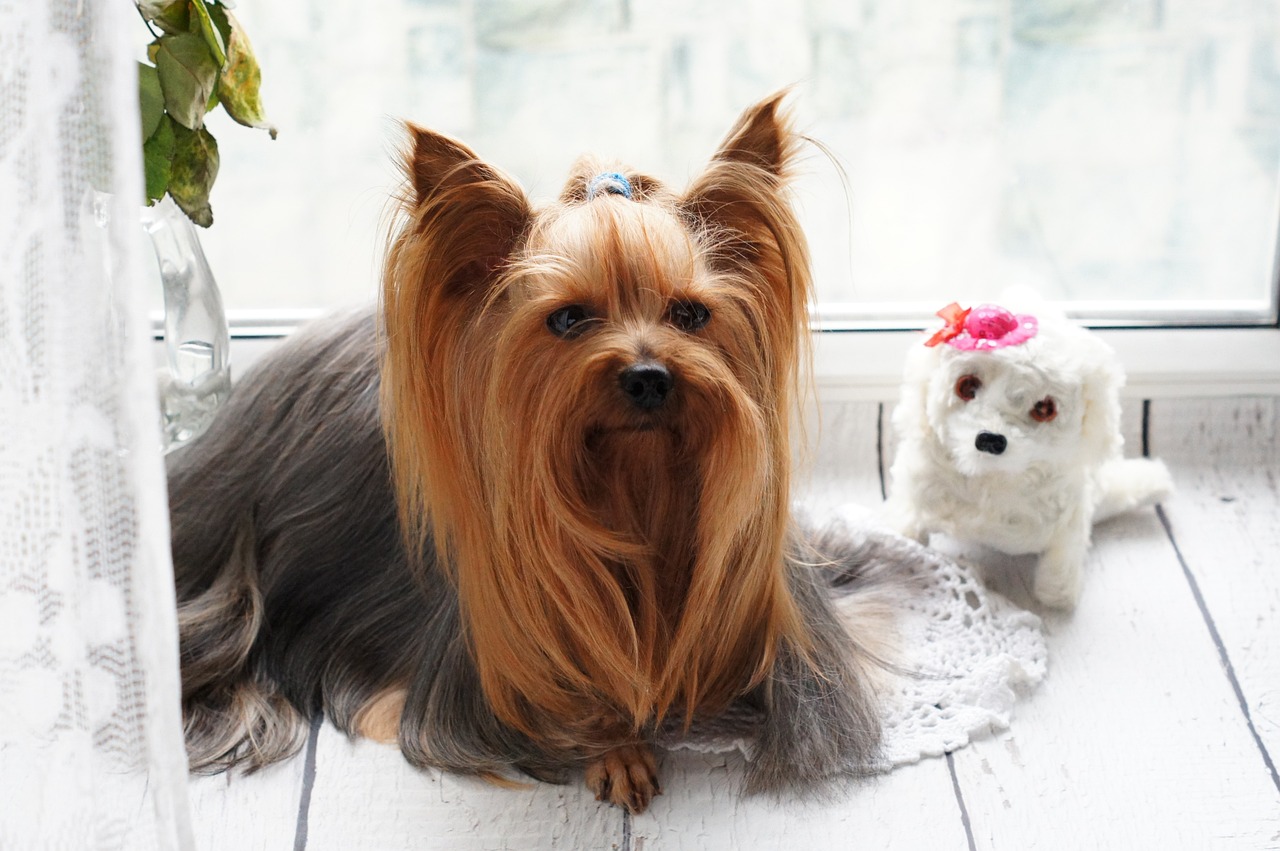
Understanding Unique Grooming Needs
When it comes to grooming our beloved pets, it’s essential to recognize that not all animals are created equal. Just like humans have different hair types and skin sensitivities, pets come with their own unique grooming requirements. Understanding these needs is vital for ensuring that your furry friend remains healthy, comfortable, and happy.
First, let’s talk about the breed. Different breeds have distinct grooming needs due to their coat types. For instance, breeds like the Shih Tzu and Yorkshire Terrier have long, flowing coats that require regular brushing to prevent mats and tangles. On the other hand, short-haired breeds like the Beagle or Labrador Retriever might need less frequent grooming, but they still benefit from regular brushing to remove loose fur and dander.
Next, the coat type plays a significant role in grooming requirements. Pets can have various coat types, including:
- Straight - Typically requires less maintenance.
- Curly - Needs regular grooming to prevent matting.
- Wavy - Often requires a combination of brushing and trimming.
- Double-coated - Requires seasonal grooming to manage shedding.
Moreover, a pet's health condition can also influence grooming needs. Pets with skin allergies or sensitivities may require special shampoos and conditioners that are free from harsh chemicals. Additionally, older pets may have mobility issues that make it challenging for them to groom themselves properly, necessitating more frequent grooming sessions. Recognizing these factors is crucial for maintaining your pet’s overall well-being.
Lastly, consider your pet's lifestyle. An active dog that loves to play outside may need more frequent grooming than a cat that primarily stays indoors. Factors like exposure to dirt, mud, and other environmental elements can impact how often you need to groom your pet. By tailoring your grooming routine to your pet's specific needs, you can ensure they not only look their best but feel their best too!
In summary, understanding the unique grooming needs of your pet is not just about keeping them looking good; it's about supporting their health and happiness. By paying attention to breed, coat type, health, and lifestyle, you can create a grooming routine that suits your pet perfectly.
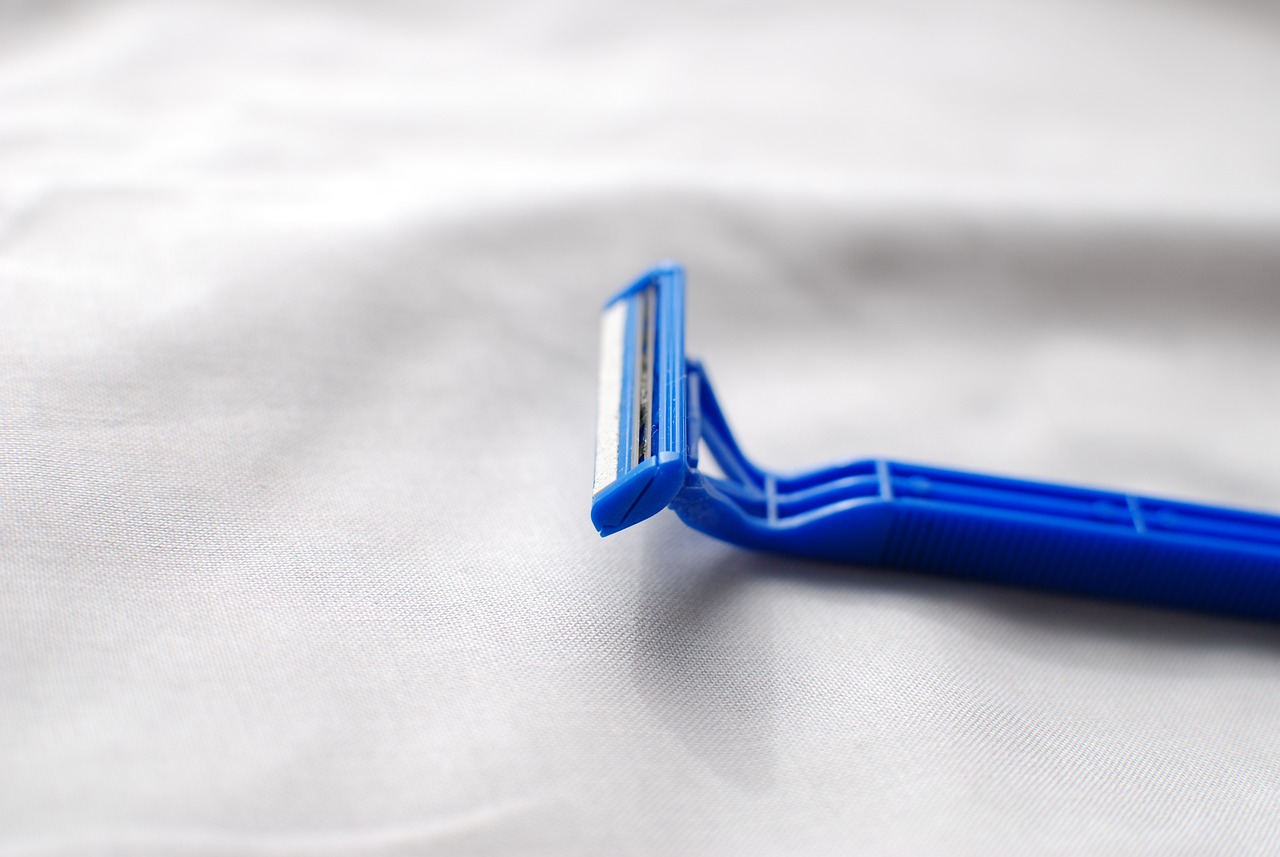
Tools and Products for Specialized Grooming
When it comes to grooming pets with unique needs, having the right tools and products is absolutely essential. Just like a painter needs the right brushes to create a masterpiece, a pet owner must equip themselves with the appropriate grooming tools to ensure their furry friends look and feel their best. The variety of coat types and grooming challenges can be overwhelming, but fear not! With some guidance, you can find the perfect products tailored to your pet's specific requirements.
First off, let's talk about brushes and combs. These are your frontline tools for maintaining your pet's coat. Not all brushes are created equal; for instance, a slicker brush is fantastic for detangling and removing loose fur, especially for long-haired breeds like Yorkshire Terriers or Persian Cats. On the other hand, a bristle brush works wonders for short-haired pets, helping to distribute natural oils and keep their coat shiny. Here’s a quick overview of the best brush options:
| Coat Type | Recommended Brush | Purpose |
|---|---|---|
| Long Hair | Slicker Brush | Detangles and removes loose fur |
| Short Hair | Bristle Brush | Distributes natural oils |
| Curly Hair | Pin Brush | Prevents matting |
Next, let’s dive into shampoos and conditioners. Choosing the right products is crucial for your pet's skin and coat health. Just like humans have different skin types, pets do too! For instance, if your dog has sensitive skin, opting for a hypoallergenic shampoo can prevent irritation. Meanwhile, a moisturizing conditioner can help keep their coat soft and manageable. It's essential to read labels and select products based on your pet's specific needs, and always consult your veterinarian if you're unsure.
Another important category is grooming tools designed for specific grooming challenges. For instance, if your pet is prone to matting, a dematting tool can be a lifesaver. These tools are designed to gently break apart knots without pulling on your pet's skin, making the grooming experience much more pleasant for them. Additionally, nail clippers and grinders are vital for maintaining your pet's paw health. Regular nail trimming prevents discomfort and potential injuries, so having the right tool for the job is non-negotiable.
Lastly, consider incorporating grooming wipes and ear cleaning solutions into your grooming toolkit. Grooming wipes can be a quick and easy way to freshen up your pet between baths, especially for those who may not enjoy water. Ear cleaning solutions are essential for breeds with floppy ears, as they can be prone to wax buildup and infections. Keeping these products on hand ensures that you're always prepared for a grooming session.
In summary, investing in the right tools and products for specialized grooming is not just about aesthetics; it’s about enhancing your pet's overall well-being. With the right equipment in your arsenal, you can transform grooming from a chore into a bonding experience that both you and your pet will look forward to.
- How often should I groom my pet? The frequency depends on your pet's coat type. Long-haired breeds may require grooming several times a week, while short-haired breeds may only need it once a month.
- What if my pet doesn't like being groomed? Start slowly and use positive reinforcement. Gradually introduce grooming tools and reward your pet with treats to create a positive association.
- Can I use human shampoo on my pet? It's not recommended as human shampoos can disrupt the pH balance of your pet's skin. Always choose products specifically formulated for pets.
Brushes and Combs
When it comes to grooming your pet, the right tools can make all the difference. are essential for maintaining a healthy coat, preventing matting, and ensuring your furry friend feels comfortable during the grooming process. But with so many options available, how do you choose the right ones for your pet’s unique coat type? Let's break it down!
First, it's important to understand that not all brushes and combs are created equal. Different breeds come with different coat types—think about the fluffy Pomeranian versus the sleek Dachshund. Each requires a specific grooming approach. For instance, long-haired breeds tend to get tangled more easily, so a wide-toothed comb can help detangle knots without pulling on their skin. On the other hand, short-haired breeds may benefit from a rubber curry brush that not only removes loose fur but also stimulates their skin's natural oils.
Here are some common types of brushes and combs you might consider for your pet:
- Slicker Brushes: Great for removing mats and tangles in long-haired breeds.
- Pin Brushes: Ideal for fluffy coats, helping to lift and separate fur.
- Bristle Brushes: Perfect for short-haired pets, as they help distribute natural oils.
- Wide-Toothed Combs: Best for detangling without causing discomfort.
- De-shedding Tools: Excellent for reducing shedding, especially in double-coated breeds.
To make your grooming sessions effective, consider the following tips:
- Choose a brush that feels comfortable in your hand. You’ll be using it often, so ergonomics matter!
- Groom your pet in a well-lit area so you can see any tangles or dirt easily.
- Be gentle! Always brush in the direction of hair growth to avoid causing discomfort.
In addition to the type of brush, the frequency of grooming also plays a crucial role. Regular brushing not only keeps your pet’s coat looking fabulous but also helps you check for any skin issues or parasites. It’s like a mini health check-up every time you groom!
Lastly, don’t forget to reward your pet after grooming sessions. A little treat or playtime can turn a grooming chore into a bonding experience, making them more likely to cooperate in the future. After all, grooming should be a positive experience for both you and your pet!
Shampoos and Conditioners
When it comes to grooming your pet, choosing the right shampoo and conditioner is absolutely crucial. Just like humans, pets have different skin types and coat conditions that require specific care. Using the wrong products can lead to skin irritations, dryness, or even allergic reactions. So, how do you pick the best products for your furry friend? Let's dive in!
First and foremost, it's important to consider your pet's specific needs. For instance, if your pet has a sensitive skin condition, look for shampoos that are hypoallergenic and free from harsh chemicals. Natural ingredients like oatmeal and aloe vera can be incredibly soothing. On the other hand, if your pet has a long or thick coat, a moisturizing shampoo and a rich conditioner can help detangle and nourish their fur.
Here’s a quick breakdown of what to look for in shampoos and conditioners based on coat type:
| Coat Type | Recommended Products |
|---|---|
| Short Hair | Lightweight shampoo, occasional conditioner |
| Long Hair | Moisturizing shampoo, detangling conditioner |
| Curly Hair | Specialized curl shampoo, leave-in conditioner |
| Double Coat | De-shedding shampoo, hydrating conditioner |
Additionally, consider your pet's lifestyle. If your furry friend loves to splash around in muddy puddles or roll in the grass, you may want a deep-cleaning shampoo that can cut through dirt and odors. Conversely, for pets that are more sedentary, a gentle cleansing shampoo might suffice.
Another key factor is the pH balance of the products you choose. Pets have a different skin pH than humans, typically around 6.2 to 7.4, so it's essential to select products that are designed specifically for them. This helps maintain their skin's natural barrier and prevents irritation. You might come across terms like "pH-balanced" or "pet-safe" on the labels; these are good indicators that the product is appropriate for your pet.
Once you've chosen the right shampoo, don't forget the conditioner! A good conditioner can make a world of difference, especially for pets with longer fur. It helps to moisturize the coat, making it easier to brush and reducing the likelihood of mats and tangles. Some conditioners even have added benefits, like detangling agents or flea-repelling properties.
In summary, selecting the right shampoo and conditioner for your pet is not just about keeping them clean; it's about ensuring their overall health and comfort. With the right products, you can turn grooming from a chore into a bonding experience, leaving your pet looking and feeling their best!
- How often should I bathe my pet? It depends on the breed and lifestyle. Generally, every 4-6 weeks is recommended for most pets.
- Can I use human shampoo on my pet? No, human shampoos can disrupt your pet’s skin pH and cause irritation. Always use products formulated for pets.
- What should I do if my pet has a skin reaction to a product? Stop using the product immediately and consult your veterinarian for advice.
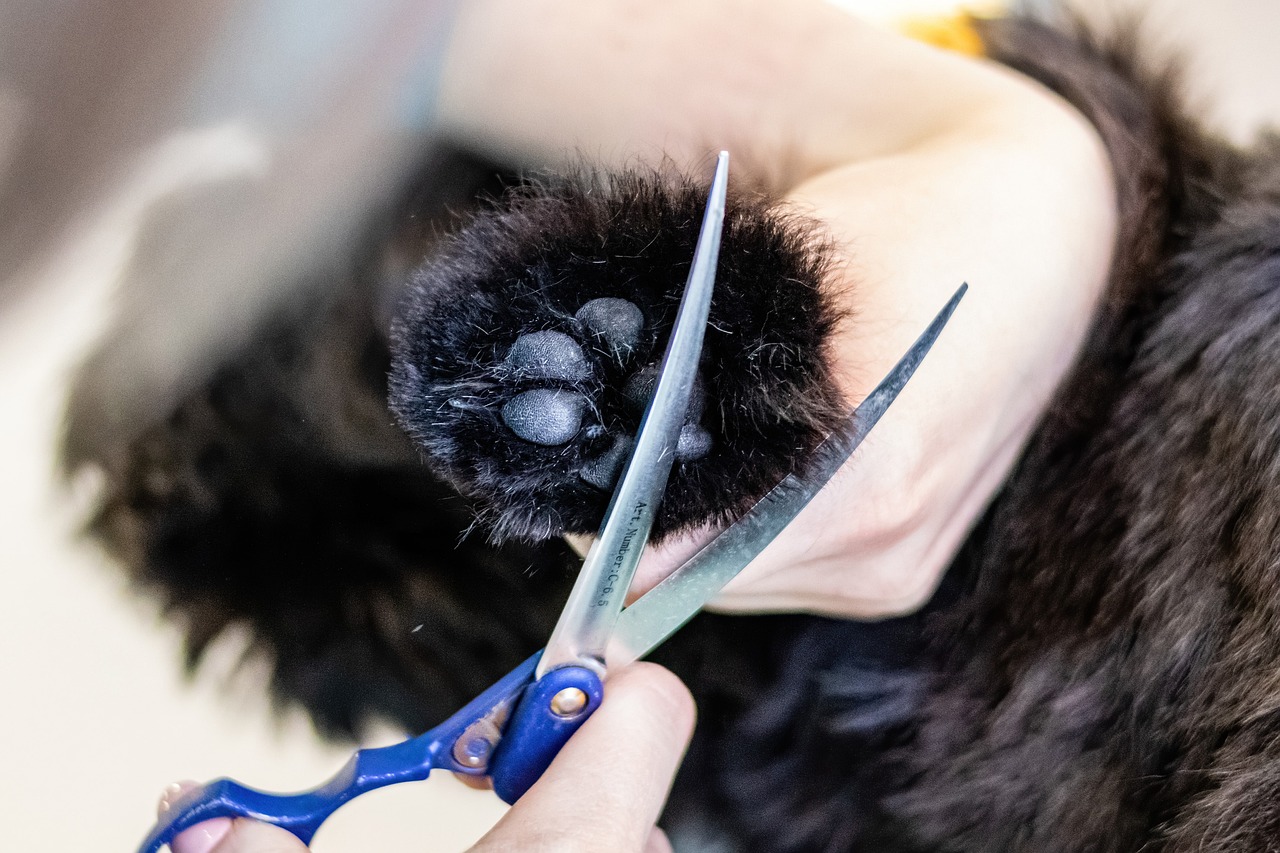
Establishing a Grooming Routine
Creating a consistent grooming routine is essential for both you and your furry friend. Just like humans, pets thrive on routine, and establishing a regular schedule can make grooming less stressful. Think of it as a dance; the more you practice, the more in sync you become. It’s not just about keeping your pet looking good; it’s about ensuring their overall health and comfort. So, how do you get started? Let’s dive into some practical tips to help you establish a grooming routine that works for both of you!
First off, consider your pet's specific grooming needs. Different breeds have different requirements, and understanding these needs is the first step in creating a successful routine. For example, long-haired breeds like Yorkshire Terriers or Persian Cats may require more frequent grooming sessions compared to short-haired breeds like Beagles or Boxers. The goal is to keep your pet’s coat healthy and free of mats, while also monitoring their skin for any signs of irritation or infection. You might even find it helpful to create a simple chart or table to track your pet’s grooming schedule based on their needs.
| Breed Type | Grooming Frequency | Notes |
|---|---|---|
| Long-Haired | Every 1-2 weeks | Requires regular brushing to prevent mats. |
| Medium-Haired | Every 2-4 weeks | Less prone to mats, but still needs regular care. |
| Short-Haired | Every month | Minimal grooming needed, but regular check-ups are beneficial. |
Next, think about the timing of your grooming sessions. Choose a time when your pet is calm and relaxed, perhaps after a walk or play session. This way, they’re more likely to associate grooming with positive experiences. You might even want to incorporate some treats or toys to make the process enjoyable. Remember, consistency is key; try to stick to the same days and times each week. This helps your pet anticipate grooming sessions and reduces anxiety.
Another important aspect is to gradually introduce your pet to grooming tools. Start with short sessions, allowing your pet to get used to the brushes, combs, and clippers. Just like a child learning to swim, they need time to adjust to the water. If your pet shows signs of discomfort or anxiety, pause and reassure them. Over time, you can extend the duration of grooming sessions as they become more comfortable with the process.
Lastly, don't forget to monitor your pet's behavior during grooming. If you notice any signs of distress—like excessive whining, trying to escape, or growling—it's crucial to take a step back. This might mean adjusting your approach or seeking help from a professional groomer. Your pet’s comfort and well-being should always come first.
In summary, establishing a grooming routine isn’t just about keeping your pet looking their best. It’s a vital part of their health and happiness. By understanding their specific grooming needs, choosing the right times for grooming, and introducing tools gradually, you can create a positive experience that benefits both you and your pet.
- How often should I groom my pet? - It depends on the breed and coat type. Long-haired pets may need grooming every 1-2 weeks, while short-haired breeds can be groomed monthly.
- What tools do I need for grooming? - Essential tools include brushes, combs, clippers, and shampoos tailored to your pet's specific needs.
- How can I make grooming less stressful for my pet? - Start with short sessions, use treats, and choose a calm time for grooming. Gradually introduce grooming tools to help them adjust.
- When should I consider professional grooming services? - If your pet has unique grooming needs or shows signs of distress during grooming, it may be beneficial to consult a professional.
Frequency of Grooming
When it comes to grooming your furry friend, one of the most important aspects to consider is how often you should groom them. Just like humans have different hair types and styles that require varying levels of maintenance, pets also have unique grooming needs based on their coat type, breed, and lifestyle. So, how do you determine the right frequency for grooming? Well, it often boils down to a few key factors.
For instance, long-haired breeds, such as Yorkshire Terriers or Persian Cats, typically require more frequent grooming—often daily or every other day—to prevent mats and tangles from forming. On the other hand, short-haired breeds like Beagles or Boxers may only need grooming once a week. This is because their coats are less likely to become tangled and tend to shed more easily, making it simpler to keep their fur looking fresh and clean.
Another factor to consider is your pet's activity level. If your dog loves to roll around in the mud or your cat enjoys outdoor adventures, you might need to groom them more often to keep their coats free of dirt and debris. Additionally, pets that are prone to skin issues may benefit from more frequent grooming sessions to monitor their skin health and remove any irritants.
Here's a quick reference table to help you understand the general grooming frequency for different types of coats:
| Coat Type | Recommended Frequency |
|---|---|
| Long-Haired | Daily to Every Other Day |
| Medium-Haired | Every 1-2 Weeks |
| Short-Haired | Once a Week |
| Wire-Haired | Every 4-6 Weeks |
Ultimately, the key is to observe your pet's coat and skin condition regularly. If you notice that your pet's coat is becoming greasy, matted, or has an unpleasant odor, it’s a clear sign that they need a grooming session sooner rather than later. Regular grooming not only keeps your pet looking fabulous but also allows you to check for any skin issues, parasites, or abnormalities that may require veterinary attention.
Remember, grooming should be a positive experience for both you and your pet. Establishing a routine that works for both of you will help your pet feel comfortable and relaxed during grooming sessions. So, whether it’s a quick brush after a walk or a full grooming session on the weekend, find a rhythm that suits your lifestyle and your pet’s needs.
- How often should I groom my dog? It depends on the breed and coat type. Long-haired dogs may need daily grooming, while short-haired breeds might only require weekly grooming.
- What tools do I need for grooming? Essential tools include brushes, combs, shampoos, and conditioners tailored to your pet's specific coat type.
- Can I groom my pet at home? Yes! With the right tools and techniques, many pet owners can successfully groom their pets at home.
- When should I consider professional grooming services? If your pet has a very specific grooming requirement or if you feel overwhelmed, seeking a professional groomer can be beneficial.
Desensitizing Your Pet
Grooming can be a daunting experience for many pets. Just like humans, our furry friends can feel anxious or uncomfortable when faced with unfamiliar tools and processes. So, how do we make grooming a more pleasant experience for them? The answer lies in desensitization. This process involves gradually introducing your pet to grooming tools and techniques in a way that promotes comfort and reduces fear.
Start by allowing your pet to explore the grooming tools without any pressure. Place a brush or comb on the floor and let them sniff it, play with it, or even sit next to it. This helps them associate the tool with a positive experience. You can also reward them with treats or praise during this exploration phase. Think of it as a game – the more fun they have, the less they’ll fear the grooming session.
Once your pet is comfortable with the tools, it’s time to get hands-on. Begin with short grooming sessions, focusing on just one area of their body at a time, such as the back or the tail. Use gentle strokes and keep the sessions brief, gradually increasing the duration as your pet becomes more accustomed to the process. This gradual exposure is key to building their confidence. Remember, patience is essential! If your pet shows signs of distress, take a step back and give them time to relax.
It's also helpful to create a calming environment during grooming. Consider playing soft music or using a soothing voice to help your pet feel more at ease. You might even want to set up a cozy space with their favorite blanket or toy nearby. The goal is to make grooming feel like a safe haven rather than a stressful chore.
In addition to these techniques, you can use positive reinforcement to further encourage your pet. After each grooming session, reward them with a treat or extra playtime. This not only reinforces the idea that grooming is a good thing but also strengthens your bond with your pet. Over time, your furry friend will likely start to look forward to grooming sessions instead of dreading them.
Finally, remember that every pet is different. Some may take to grooming like a duck to water, while others may require more time and patience. Keep an eye on their body language; if they seem relaxed, you’re on the right track. If they exhibit signs of stress, like panting or trying to escape, it’s a cue to slow down and reassess your approach.
By implementing these desensitization techniques, you can transform grooming from a dreaded task into a bonding experience that both you and your pet can enjoy. With time, love, and patience, your pet will be as comfortable with grooming as they are with cuddles!
- How long does it take to desensitize my pet? The time it takes varies depending on the individual pet. Some may adapt quickly, while others may need several weeks.
- What signs should I look for to know if my pet is uncomfortable? Signs of discomfort include panting, whining, trying to escape, or aggressive behavior. Pay attention to their body language!
- Can I use treats during grooming? Absolutely! Using treats as a reward can help create positive associations with grooming.
- Is it necessary to desensitize my pet? While not every pet will need extensive desensitization, it can greatly benefit those who show signs of anxiety during grooming.
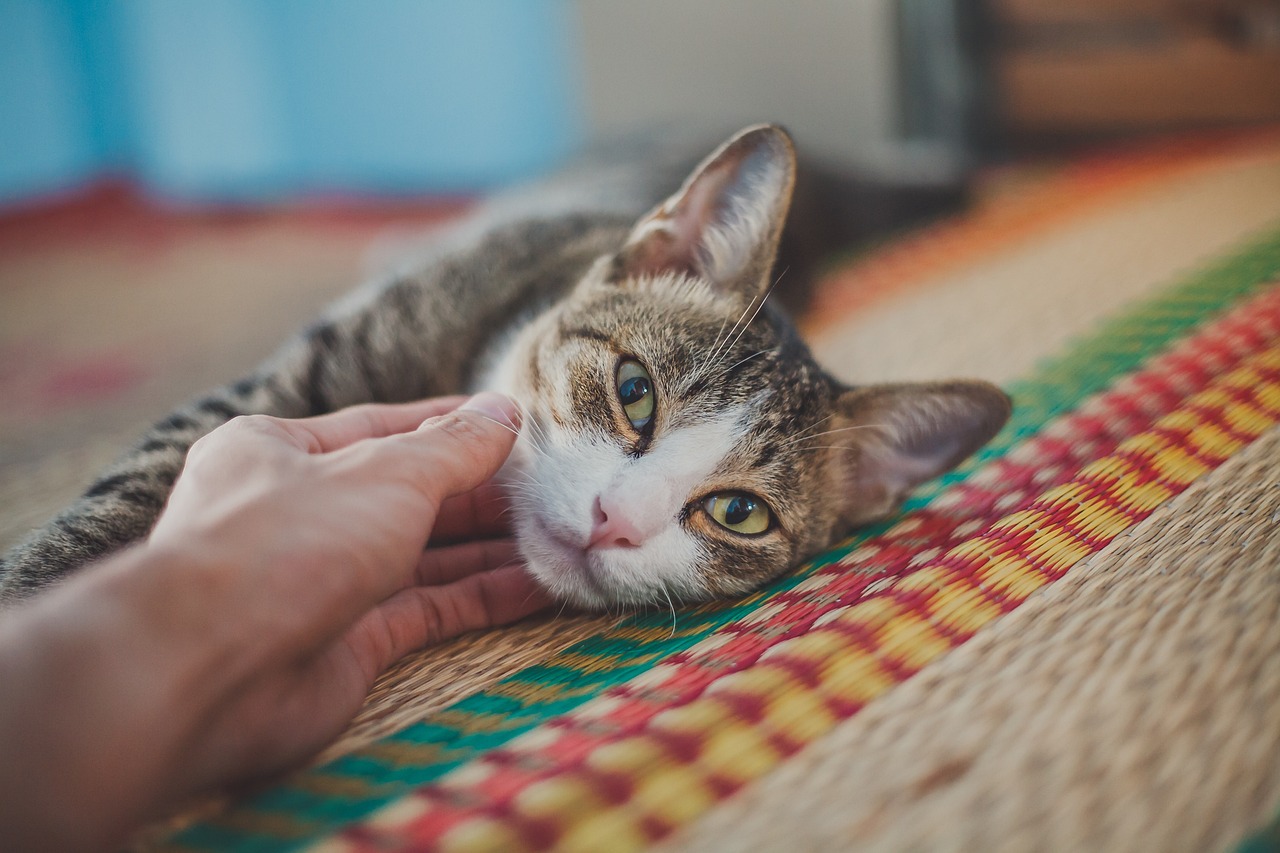
Recognizing Signs of Grooming Discomfort
Grooming your pet can be a delightful bonding experience, but it’s essential to be vigilant about their comfort level during the process. Just like us, pets can experience discomfort or anxiety, and recognizing the signs early can make all the difference. Have you ever noticed your furry friend acting a bit odd while being groomed? It’s crucial to pay attention to their body language and behavior to ensure they are not feeling stressed or scared.
One of the most common signs of grooming discomfort is vocalization. If your pet starts whining, growling, or even barking during grooming sessions, it might be a clear indication that they are not enjoying the process. Additionally, watch for physical signs such as tensing up or trying to escape. If your pet is squirming, pulling away, or attempting to jump off the grooming table, it’s time to take a step back and reassess the situation.
Another important sign to look for is licking or biting at the area being groomed. This behavior can indicate irritation or discomfort, suggesting that your pet may be feeling pain or anxiety. Moreover, if your pet is excessively shedding or has a sudden change in behavior, such as becoming withdrawn or aggressive, these could be red flags that they are not comfortable with the grooming process.
To help you identify these signs more easily, here’s a quick reference table:
| Sign of Discomfort | Possible Interpretation |
|---|---|
| Vocalization (whining, growling) | Feeling anxious or in pain |
| Tensing up or trying to escape | Uncomfortable with the grooming process |
| Licking or biting at the area | Indicates irritation or discomfort |
| Excessive shedding | Stress or discomfort |
| Change in behavior (withdrawn or aggressive) | Possible distress or fear |
Recognizing these signs is just the first step. Once you notice any of these discomfort indicators, it’s essential to address them promptly. You might want to take a break during the grooming session, offer your pet some treats, or even try desensitizing them to grooming tools gradually. Remember, the goal is to make grooming a positive experience for your pet, so always approach them with patience and understanding.
Here are some common questions pet owners have regarding grooming discomfort:
- What should I do if my pet shows signs of discomfort? - Take a break, comfort your pet, and reassess your grooming approach.
- How can I make grooming less stressful for my pet? - Gradually introduce grooming tools, use positive reinforcement, and maintain a calm environment.
- Is it normal for pets to dislike grooming? - Yes, many pets may have anxiety about grooming, especially if they haven’t been accustomed to it from a young age.
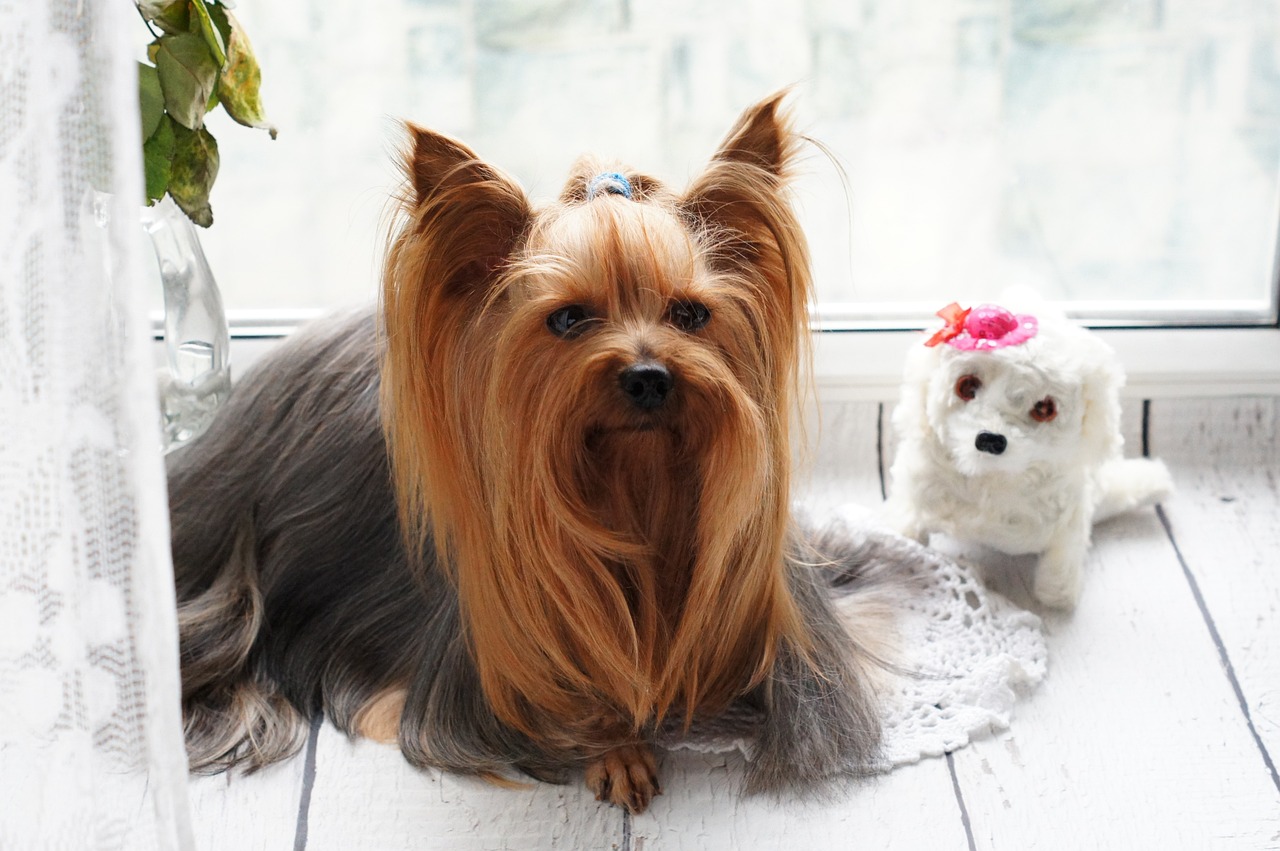
Professional Grooming Services
When it comes to our furry friends, there are times when we need to throw in the towel and call in the experts. can be a game changer, especially for pets with unique grooming needs that might be beyond the scope of a DIY approach. Have you ever tried to groom a Poodle or a Persian cat? If so, you know that their coats require specialized care that can be tricky to manage at home. This is where professional groomers step in, armed with the right tools, techniques, and experience to ensure your pet looks and feels their best.
But how do you know when it's time to seek professional help? Well, there are a few telltale signs that indicate your pet might benefit from a groomer’s expertise. For instance, if your pet's coat is severely matted, or if you're unsure about how to handle their specific grooming requirements, it’s definitely worth considering. Additionally, some breeds have specific grooming schedules that can be difficult to maintain at home. For example, breeds like the Shih Tzu and Yorkshire Terrier may require regular trims and specialized care that can be a bit overwhelming for pet owners.
When searching for a professional groomer, it's essential to choose someone who understands your pet's unique needs. Here are a few factors to consider:
- Experience with Breed-Specific Grooming: Ensure the groomer has experience with your pet’s breed and coat type.
- Reviews and Recommendations: Look for reviews online or ask fellow pet owners for recommendations.
- Facility Standards: Visit the grooming facility to check for cleanliness and safety standards.
- Comfort Level: Observe how your pet reacts to the groomer; they should feel comfortable and safe.
Another important aspect of professional grooming services is the variety of services offered. Many groomers provide a range of options, from basic baths and nail trims to full grooming packages that include clipping, styling, and even spa treatments. Some groomers also offer additional services like de-shedding treatments for pets that shed heavily, or medicated baths for those with skin conditions. It’s a good idea to discuss your pet’s specific needs with the groomer beforehand to ensure they can provide the appropriate care.
Lastly, don’t forget about the importance of follow-up care after a professional grooming session. While groomers do a fantastic job, maintaining your pet's coat and skin health at home is equally important. This might include regular brushing, using the right shampoos, and monitoring your pet for any signs of discomfort. Remember, grooming is not just a one-time event; it’s an ongoing process that contributes to your pet’s overall health and happiness.
Here are some common questions pet owners have about professional grooming services:
| Question | Answer |
|---|---|
| How often should I take my pet to a professional groomer? | It depends on your pet's breed and coat type. Generally, every 4-6 weeks is a good rule of thumb for most breeds. |
| What should I look for in a grooming facility? | Look for cleanliness, safety protocols, and a friendly atmosphere. Also, make sure the groomers are experienced with your pet's breed. |
| Can I stay with my pet during the grooming session? | Many groomers allow pet owners to stay, but some may suggest that you wait outside to help reduce anxiety for your pet. |
| What if my pet has special needs? | Make sure to communicate any special needs or concerns to the groomer before the appointment. |
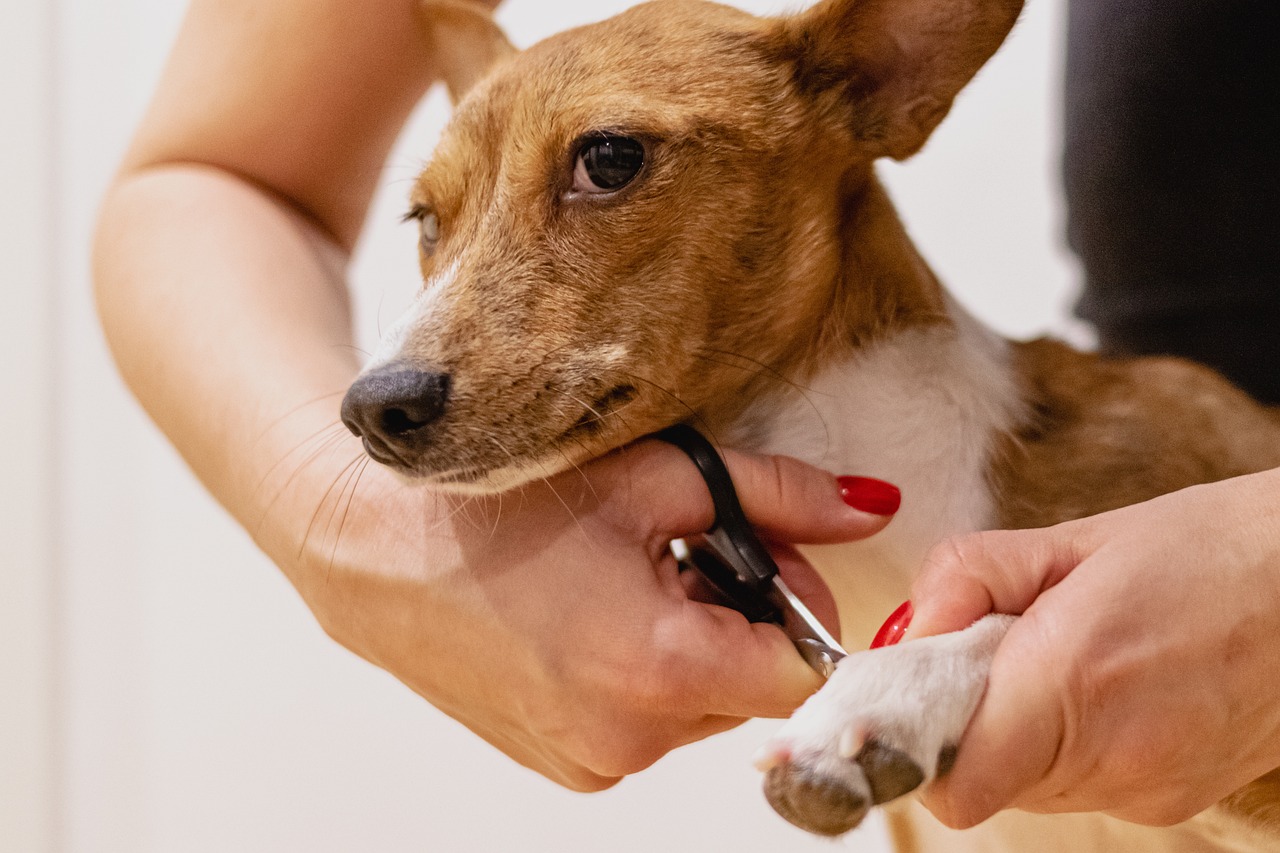
Post-Grooming Care
After a grooming session, it’s essential to ensure your pet feels comfortable and looks their best. Just like we enjoy a refreshing shower followed by some pampering, your furry friend deserves the same kind of care! Post-grooming care is not just about aesthetics; it plays a crucial role in maintaining your pet's overall health and well-being. You might be wondering, "What should I do after grooming?" Well, let’s dive into some important practices that will keep your pet happy and healthy.
First and foremost, check for any signs of irritation or discomfort. After grooming, it’s not uncommon for pets to experience some sensitivity, especially if they have a thick or sensitive coat. Look for redness, swelling, or excessive scratching. If you notice any of these signs, it might be time to consult your veterinarian to rule out any underlying issues.
Next, ensure proper hydration. Grooming can sometimes be a lengthy process, and your pet might need a refreshing drink afterward. Always provide fresh water to keep them hydrated. Additionally, this is a great time to reward your pet with a treat for being such a good sport during grooming. It’s like giving them a well-deserved medal for their bravery!
Another essential aspect of post-grooming care is skin and coat maintenance. Depending on the type of coat your pet has, you may want to apply a suitable conditioner or leave-in treatment to keep their fur soft and manageable. For example, long-haired breeds benefit from a good detangler to prevent knots from forming after grooming. Here’s a quick table to help you choose the right products:
| Coat Type | Recommended Products |
|---|---|
| Short Hair | Lightweight conditioner, moisturizing spray |
| Medium Hair | Detangling spray, leave-in conditioner |
| Long Hair | Deep conditioner, anti-static spray |
Moreover, keep an eye on their nails. If you’ve trimmed your pet’s nails during grooming, monitor them for any signs of discomfort while walking. If they seem hesitant or are limping, it could be a sign that the nails were cut too short. On the other hand, if you’ve decided to skip nail trimming, be sure to check them regularly to prevent overgrowth, which can lead to painful walking.
Lastly, don’t forget about ear and dental care. Grooming is an excellent opportunity to check your pet’s ears for dirt or wax buildup. If you notice any issues, gently clean their ears with a vet-recommended solution. Additionally, maintaining dental hygiene is vital; consider brushing your pet's teeth or providing dental chews to keep their mouth healthy.
In summary, post-grooming care is not just an afterthought; it’s an integral part of your pet’s grooming routine. By staying vigilant and attentive to their needs, you can ensure that your furry friend enjoys the benefits of grooming long after the session is over. Remember, a happy and well-cared-for pet is a joy to have around!
- How often should I groom my pet? The frequency depends on your pet's breed and coat type. Long-haired breeds may require grooming every few days, while short-haired ones might only need it weekly.
- What if my pet dislikes grooming? Gradually introduce grooming tools and techniques to desensitize your pet. Start with short sessions and use treats to create a positive association.
- Should I take my pet to a professional groomer? If your pet has unique grooming needs or if you're unsure about how to groom them properly, a professional groomer can provide expert care.
Frequently Asked Questions
- What are the unique grooming needs of different pet breeds?
Different breeds have specific grooming requirements based on their coat type, skin sensitivities, and overall health. For instance, long-haired breeds like the Afghan Hound require regular brushing to prevent matting, while short-haired breeds may need less frequent grooming. Understanding these unique needs is crucial for maintaining your pet's health and comfort.
- What grooming tools should I use for my pet?
Selecting the right grooming tools is essential. For pets with thick or curly coats, a slicker brush or a wide-toothed comb is often recommended. On the other hand, a bristle brush works well for short-haired breeds. Always consider your pet's specific coat type when choosing grooming tools to ensure effective maintenance.
- How often should I groom my pet?
The frequency of grooming depends largely on your pet's coat type and lifestyle. For example, pets with long fur may need grooming several times a week, while short-haired pets might only need it once a month. Establishing a routine will help keep your pet's coat healthy and manageable.
- What should I do if my pet is anxious about grooming?
Desensitizing your pet to grooming tools is key. Start by introducing them to the tools gradually, allowing them to sniff and explore. Use treats and positive reinforcement to create a positive association. Over time, this will help reduce their anxiety during grooming sessions.
- How can I tell if my pet is uncomfortable during grooming?
Watch for signs of discomfort such as whining, trying to escape, or aggressive behavior. If your pet shows these signs, take a break and reassure them. It's important to create a calm environment to help your pet feel safe and relaxed during grooming.
- When should I consider professional grooming services?
Professional grooming is often necessary for pets with complex grooming needs, such as those with heavily matted fur or specific breed cuts. If you're unsure about how to handle your pet's grooming requirements, a professional groomer can provide the expertise and care needed.
- What post-grooming care does my pet need?
After grooming, it's important to check your pet's skin for any irritations and to keep their coat clean and moisturized. Using a suitable conditioner can help maintain coat health. Additionally, keep an eye on their behavior to ensure they're comfortable after their grooming session.


